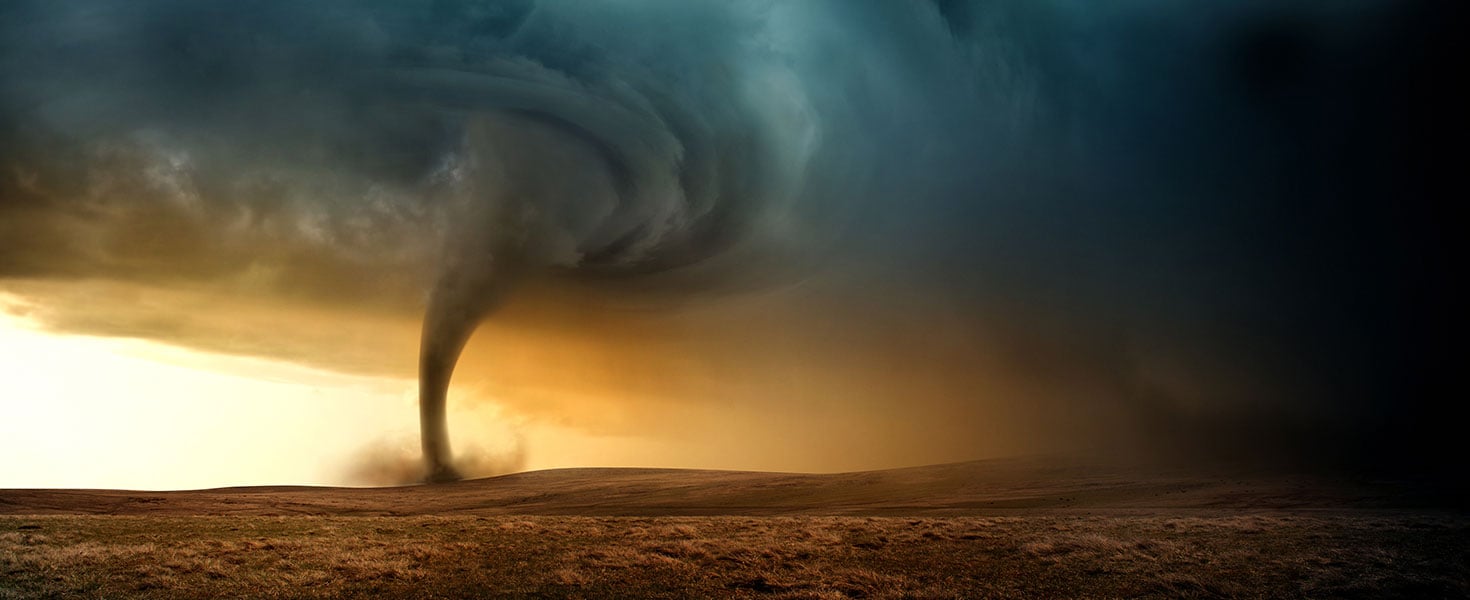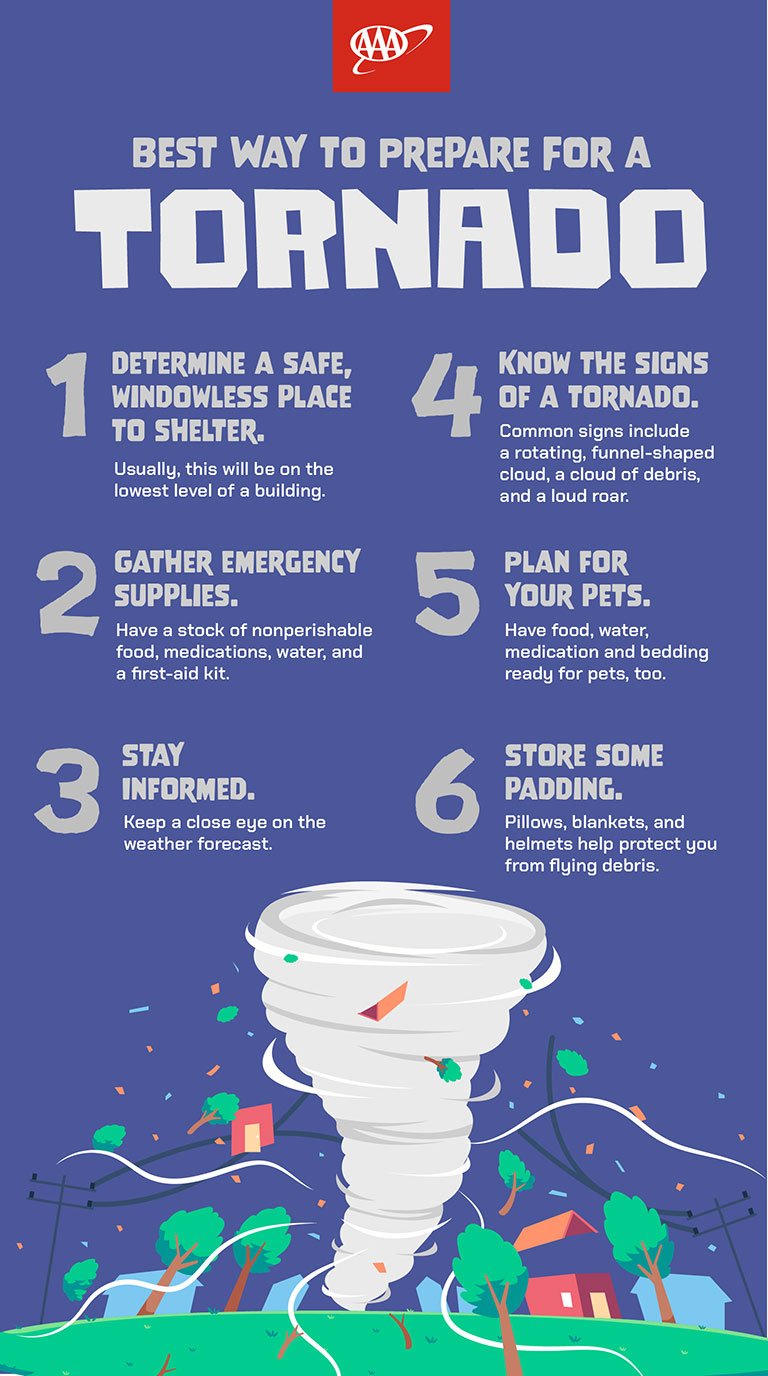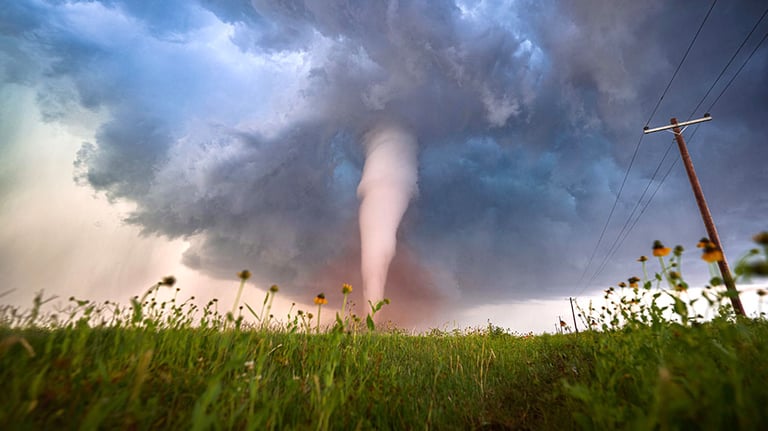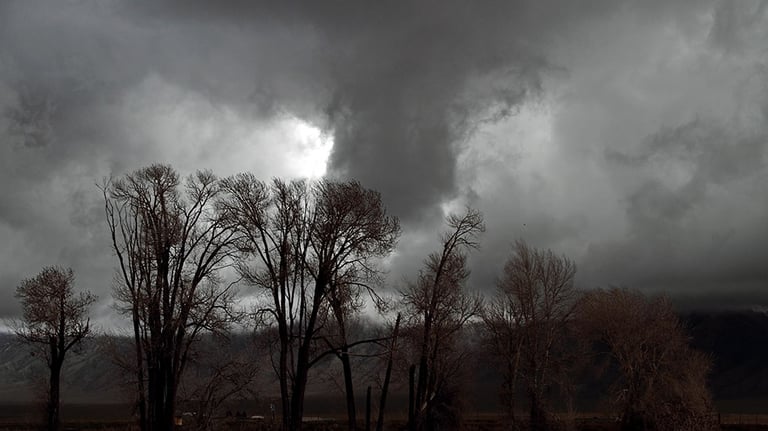What to Do in a Tornado: Advice That Could Save Your Life
These tips will help you stay safe, no matter where you are



Spring brings the promise of milder temperatures and blossoming flowers. It also brings an increased threat of severe weather, including one of the most misunderstood weather phenomena: tornadoes.
Although tornadoes are most common in regions such as “Tornado Alley” (Texas, Oklahoma, Kansas, Nebraska, and South Dakota), they can happen anywhere. Here’s a primer on how tornadoes form and what to do in a tornado warning.

What is a tornado?
A tornado is a violently rotating column of air that extends from a thunderstorm cloud to the ground. Tornadoes can have intense winds exceeding 200 miles per hour, which makes them capable of destroying or leveling buildings, flipping cars, and sending debris flying, which can be deadly.
Where do tornadoes occur?
It’s worth repeating: Tornadoes can—and do—happen anywhere. In the US, tornadoes occur more frequently in the Midwest and Southeast. However, the Storm Prediction Center (SPC) reported at least one tornado in almost every state in 2024.
When do tornadoes occur?
About 1,000 tornadoes are reported each year across the US, according to the National Weather Service. Peak tornado season occurs in spring and summer, and they commonly arise in the late afternoon and evening hours.

How much time do you have to react to a tornado?
Tornadoes develop rapidly, often giving just a few minutes of warning. Staying prepared and knowing the signs (find out the signs in the next section on how to prepare for a tornado) can help you respond quickly and stay safe.

How do you prepare for a tornado?
It's crucial to know what to do in a tornado before it strikes. Having a safety plan in place can help you respond quickly and stay safe. Key parts of the plan include the following:
-
- Identify a safe, windowless shelter.
Choose a location as low as possible with as many walls between you and the outside as possible. The best options include a basement or a small interior room—such as a closet, bathroom, or interior hallway—on the lowest level of a building. -
- Gather protective padding.
Store pillows, blankets, heavy coats—even bicycle or motorcycle helmets—in your shelter space. These items can help you stay comfortable and offer some protection from flying debris. -
- Pack an emergency supply kit.
Stock up on nonperishable food, water, a first-aid kit, medication, and cleaning supplies so that you’re ready if you need to shelter in place. -
- Plan for your pets.
Make sure you have supplies for your furry family members, too, so that they’re taken care of during the storm. -
- Stay informed.
Monitor your local forecast through trusted sources. Forecasters can often predict severe weather days in advance, giving you time to prepare if a tornado is imminent. -
- Recognize the signs of a tornado.
If you spot a rotating, funnel-shaped cloud, see an approaching cloud of debris, or hear a loud freight train-like roar, seek shelter immediately.
What should you do during a tornado warning?
If a tornado is developing or has been reported, you must act immediately. Your response will depend on where you are.
-
- At home or in a public building:
Go to the designated shelter without delay. -
- In a vehicle or outdoors:
Pull over and seek shelter immediately. Do not try to outrun the tornado. If possible, head to a sturdy building or underground shelter. If that's not possible, find a low-lying area such as a ditch, and get as low to the ground as possible. Stay away from your car and from anything else that a tornado could pick up. Lie flat and cover your head with your hands for protection. Do not shelter under a bridge or overpass as wind speeds can increase in these areas due to the “tunneling effect.” -
- In a mobile home:
Leave your mobile home well in advance of the storm, and go to a stronger building for shelter.
Tornadoes can be a scary weather event, but awareness of what to do in a tornado is your best weapon. Make your emergency plan now, and monitor the weather forecast. If tornadoes are forecasted, limit or avoid travel and outdoor plans—and put your emergency plan into action if necessary.
For more information, check out these tornado warnings and safety tips from the National Weather Service.
